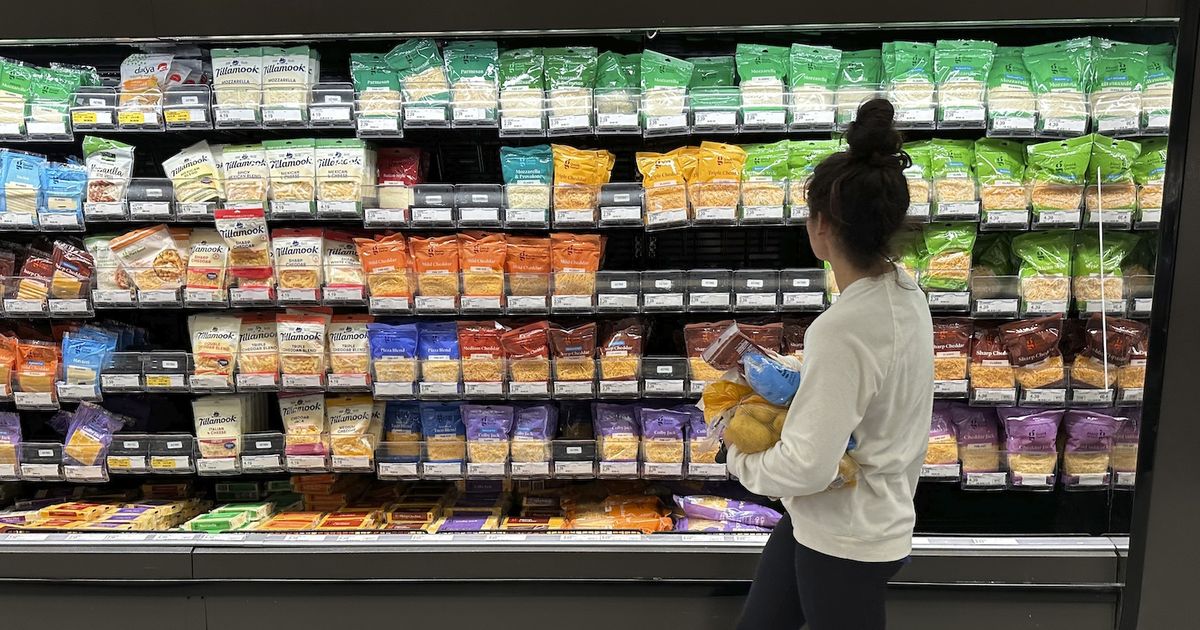“When inflation rises, it reduces people’s ability to purchase food by raising the overall cost of goods,” said Cassandra Happe, an analyst at WalletHub, a website that provides credit scores.
Unlike other items, you can’t stop buying food when it gets expensive. There’s nothing you can do about inflation, but you can find ways to save on groceries so they don’t put too much of a dent in your wallet or your eating habits. These include using coupons, budgeting, and buying in bulk.
Here are some expert tips for saving on food:
Try using coupons
Kiersten Torok started using coupons when she was in high school, after her parents lost their jobs during the 2008 recession. She relied on them even more in 2020, when she lost her own job during the COVID-19 pandemic. Now she uses her social media platform to help others learn how to save.
“When times like these come, coupons are a necessity for many Americans,” said Torok, known on Instagram and TikTok as Torok Coupon Hunter.
Many people might think that using coupons means clipping them out of a magazine. While you can still do that, there are now easier ways to get discounts. Many stores, like Walmart and Target, have coupons available on their apps.
“All you have to do is scan an item in a store, the coupons appear in your app and are then automatically applied at the register,” Torok explained. “It’s become much more streamlined.”
One of Torok’s golden rules of couponing is: never pay for toothpaste; there is always a combination of coupons and deals available. If you want to try using coupons, Torok recommends that you first start using them at your favorite store and never buy things you don’t need, even if they are heavily discounted.
Apps like Flipp, which lets you search for coupons from all major grocery stores, and Ibotta, an app that gives you cash back for using coupons, can make it easier to use coupons.
Keep track of your current expenses
Budgeting is key to keeping grocery spending under control, and the first step is to keep track of how much you spend now. Start by reviewing how much you’ve spent the last few times you went shopping, recommended David Brindley, deputy editor of AARP Bulletin magazine.
If you don’t keep receipts from previous grocery purchases, try looking at your bank statement and adding up the food charges. Once you know how much you spend on groceries, set a goal. For example, it might be to stay within a specific budget or reduce your spending.
Review what you already have
You need a plan, but before you make one, make sure you know what you currently have in your fridge and pantry. Sarah Schweisthal, personal finance expert and social media manager for budgeting app YNAB, recommends taking everything out and taking inventory so you don’t buy duplicates of things you already have on hand.
Brindley also recommends planning to cook multiple meals using similar ingredients, which saves money and reduces food waste.
Make a plan
Once you’ve tracked your spending and taken inventory of what you already have, the next step is to make a plan. Write down the items you want to buy and their estimated cost, but be sure to stay within your budget. Planning meals for the week or month can be a good way to keep track of your spending, Schweisthal said.
Walking through the aisles can sometimes lead to cravings for things you hadn’t planned on, like a new snack or dish. If you anticipate that you’ll have a hard time sticking to your list, build some flexibility into your plan, such as allocating a specific amount to purchase a craving or a random item you see in the checkout line.
“I think having flexibility in a plan really helps you stick to it better,” Schweisthal said.
Making a plan can be very simple – for example, writing a list on paper or in the notes app on your phone. Or you can use apps that help you specifically with meal planning, such as AnyList or Mealime.
Buy online
If you tend to go off your shopping list because every time you go to the store you buy things you don’t need, buying online and picking up curbside is a good alternative solution.
“I 100% recommend sitting down on Sunday morning and just looking at stores and comparing items you need for the week, especially things you can buy for curbside pickup,” Torok said.
If you buy your groceries from several stores because each has better prices on some items, ordering ahead can also save you time.
Get your family involved in saving
If you’re in charge of buying groceries for your entire family, it can be beneficial to include them in your food budgeting routine. For Torok, this has meant teaching her kids to scan coupons when they shop.
Since buying in bulk can be cost-effective, Brindley also recommends agreeing to purchase specific items in bulk with a friend or family member and sharing the discount.
Food sharing apps
Finally, you can save money by using food sharing apps like Olio, which connects people in your community to share extra grocery items, and Too Good to Go, where you can purchase surplus food at a discount.
Source: AP

